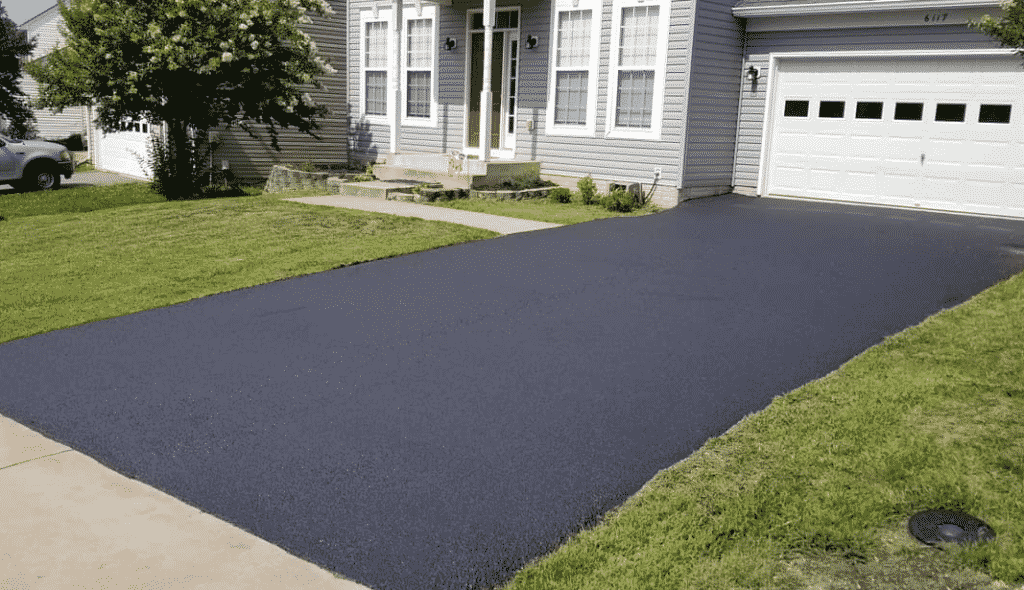Boost Sidewalk Performance: Cold Mix Asphalt Sealing Strategies
Boost Sidewalk Performance: Cold Mix Asphalt Sealing Strategies
Blog Article
Cold Mix Asphalt Vs. Hot Mix Asphalt: Which Is Right for You?

Make-up Distinctions
Cold mix asphalt is created by emulsifying the asphalt binder with water and an emulsifying representative before mixing it with aggregate. The hot mix asphalt manufacturing procedure entails warming the accumulation and asphalt binder separately before integrating them at the asphalt plant.
In addition, cool mix asphalt tends to be much less thick and a lot more versatile than warm mix asphalt. This adaptability makes it better suited for areas with greater degrees of activity, such as driveways or roads with rush hour. On the other hand, warm mix asphalt is understood for its high longevity and resistance to rutting and splitting, making it a favored choice for freeways and high-traffic roads where durability is essential.
Setup Refine Variations
The process of installing chilly mix and hot mix asphalt exhibits notable differences in their treatments and needs. Cold mix asphalt, being a more versatile product, can be applied directly from the bag or container onto the split or damaged area. It requires marginal preparation job, such as cleaning the location and condensing the cold mix with hand devices. This makes it a practical alternative for fast and short-term solutions. In contrast, hot mix asphalt necessitates an extra sophisticated setup process. It entails heating the combination to high temperature levels prior to laying it down on a correctly ready base. The preparation consists of condensing the base, applying a tack layer, and utilizing hefty machinery like pavers and compactors for a smooth and resilient surface. As a result of the heating needs, hot mix asphalt installations are typically performed by professionals with customized tools, making sure a more irreversible and structurally audio result.
Sturdiness and Longevity Elements
When taking into consideration asphalt choices, longevity and long life are vital factors to assess for lasting sidewalk performance. Hot mix asphalt (HMA) is recognized for its remarkable resilience and longevity.
In regards to longevity, HMA typically outmatches CMA because of its superior stamina and resistance residential properties. HMA pavements have a longer solution life, needing less constant repair services and maintenance, which can convert to set you back savings in the future. In addition, HMA pavements are extra quickly personalized to satisfy specific job needs, better enhancing their durability.
Expense Considerations
Considering the economic implications is a crucial element when reviewing the option between warm mix asphalt (HMA) and cool mix asphalt (CMA) for pavement jobs. While the initial expense of warm mix asphalt is generally greater than that of chilly mix asphalt, HMA frequently supplies an extra affordable option over time as a result of its superior toughness and long life. HMA is known for its capability to endure heavy website traffic tons and extreme weather condition conditions, minimizing the demand for frequent repair services and maintenance. On the various other hand, cold mix asphalt is much more budget-friendly ahead of time yet might require even more frequent patching and resurfacing, resulting in higher maintenance costs with time.
Along with product prices, it's important to take into consideration the expenses connected with setup and maintenance when contrasting HMA and CMA. HMA usually requires specialized tools and competent labor for proper setup, which can influence general project prices. Alternatively, CMA is easier to collaborate with and can usually be used using less complex strategies, possibly reducing installation costs. Ultimately, the decision between HMA and CMA need to think about not just the first expense however additionally the long-lasting financial effects to figure out the most cost-efficient choice for the specific sidewalk project.
Environmental Impact Comparison
Contrast of the ecological effects between hot mix asphalt (HMA) and chilly mix asphalt (CMA) discloses distinct differences in sustainability methods. HMA manufacturing requires high temperatures, causing raised energy usage and greenhouse gas discharges. The procedure additionally releases unstable natural substances (VOCs) and hazardous air toxins (HAPs) into the ambience. In comparison, CMA is produced and applied at reduced temperatures, decreasing energy use and discharges considerably. The reduced manufacturing temperature levels of CMA cause decreased explanation fuel intake and reduced degrees of carbon dioxide exhausts, making it a more eco-friendly choice.
In addition, the use of CMA typically involves recycling existing asphalt sidewalk, promoting source conservation and lowering the quantity of waste sent to land fills. By opting for CMA over HMA, roadway building and construction jobs can contribute positively to ecological preservation initiatives.
Final Thought
In final thought, the option between chilly mix asphalt (CMA) and warm mix asphalt (HMA) depends on numerous aspects such as composition, setup procedure, resilience, long life, price, and environmental impact. angle parking. his response While CMA uses a cost-efficient and quick option for small repairs, HMA makes sure exceptional durability and durability for heavy web traffic locations. Take into consideration these factors carefully to figure out which kind of asphalt is the right option for your paving needs

Taking into consideration the monetary effects is an important facet when examining the option in between warm mix asphalt (HMA) and cool mix asphalt (CMA) for pavement projects. While the initial expense of warm mix asphalt is generally greater than that of cool mix asphalt, HMA often gives a more affordable remedy in the lengthy run due to its remarkable sturdiness and durability. cold mix asphalt.Comparison of the ecological influences between warm mix asphalt (HMA) and cool mix asphalt (CMA) discloses distinct differences in sustainability methods.In conclusion, the option in discover this info here between chilly mix asphalt (CMA) and warm mix asphalt (HMA) depends on numerous elements such as composition, setup procedure, longevity, longevity, price, and environmental effect
Report this page